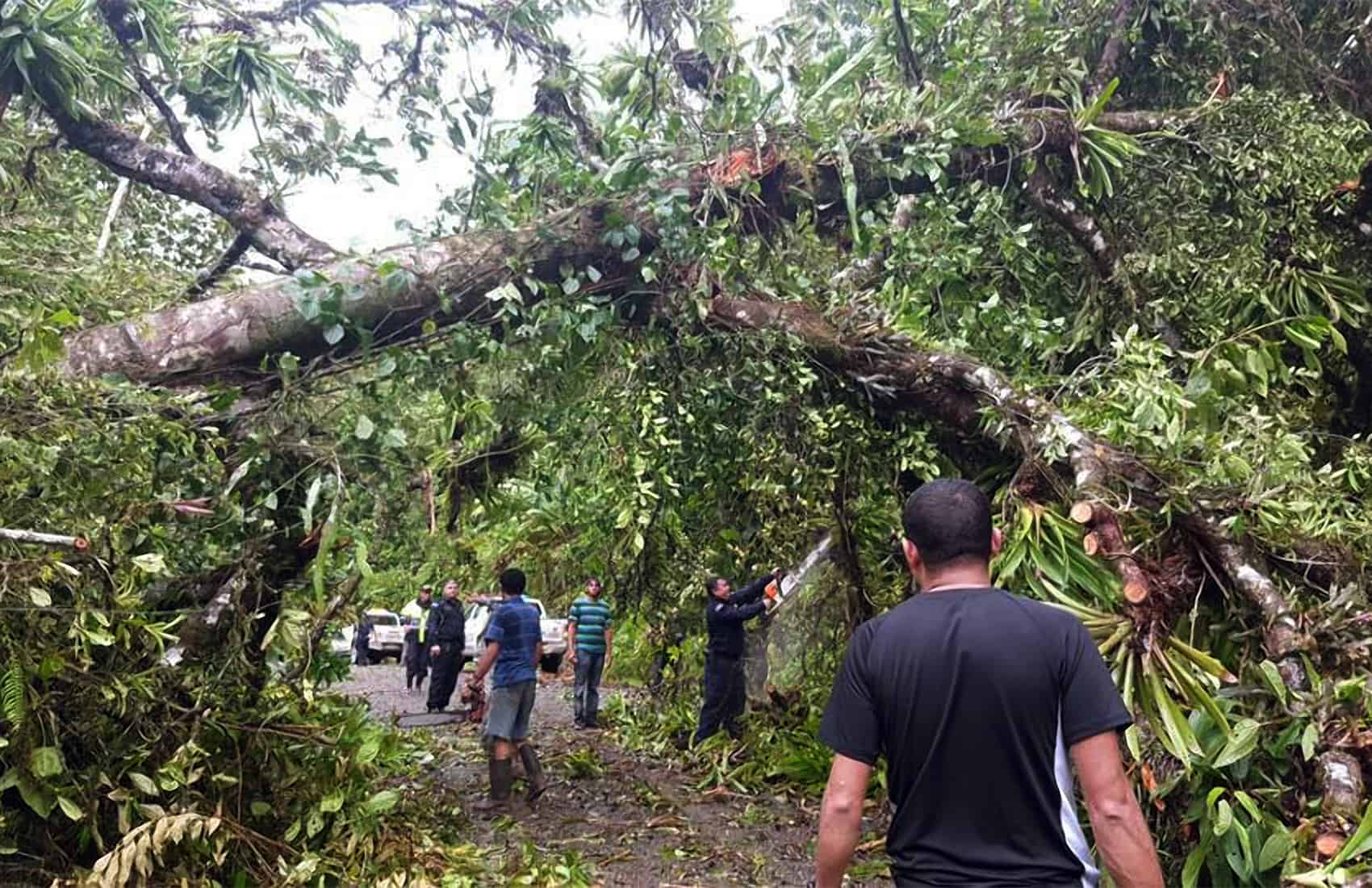The eye of Hurricane Otto made landfall in Costa Rica at around 3:30 p.m. Thursday in the northern Alajuela canton of Los Chiles, the National Meteorological Institute (IMN) reported. The hurricane was moving at a speed of 12 miles per hour with gusts of up to 96 mph in the area; it has been downgraded from category 2 to 1.
IMN forecasts state Otto will pass between the Guanacaste cantons of Liberia and La Cruz at around 9 p.m. and leave Costa Rica, heading out into the Pacific Ocean, in the early hours of Friday.
Once in open sea, the weather phenomenon will likely become a tropical storm, meteorologists forecast.
Read our complete Hurricane Otto coverage here.
Track Hurricane Otto’s path in real time:
Damage report
The National Emergency Commission (CNE) at 6:30 p.m. reported that 3,655 people are at 32 shelters in 16 cantons throughout the country. There are no reports of casualties or injuries, the agency said.
President Luis Guillermo Solís said that the government will maintain its Red Emergency Alert until Friday at the least. The alert currently includes 41 cantons across most of the country, except for the Central Valley and the southern Caribbean region.
Flooding, landslides and strong gusts caused damage to some 1,200 homes, the CNE said. The commission has received reports of damage from the hurricane in 231 communities. Of those, 23 were isolated by landslides and overflowing rivers: 14 in Golfito, 7 in Osa and 2 in Cartago.
The Costa Rican Electricity Institute (ICE) reported that fallen trees and gusts of wind left more than 20,000 people with problems with their electricity and telecommunication services.
Most of them — just over 14,000 — are residents of Northern Zone communities who were left without electricity following the hurricane’s landfall. An optic fiber line broke in Pocosol, north of Alajuela, and cut all phone, internet and mobile services in the border communities of Los Chiles, Upala, Tablillas, Guatuso and Pavones.
Strong gusts also damaged power lines and utility poles in the capital, San José, and in various communities in the provinces of Limón, Puntarenas and Alajuela.

Road damage
The Public Works and Transport Ministry (MOPT) and the National Roadway Council (CONAVI) estimated that Otto caused damage to 150 roads, to the tune of some ₡4,734 million ($8.4 million).
Most of the damage ocurred in the central region of the country, where CONAVI reported damage on 63 roads. The agency received reports from problems on roads in most of the country except the Central Pacific.
On Thursday evening MOPT confirmed closures due to landslides on the following roadways:
Alajuela: Road to Sarchí-Bajos del Toro and Zarcero. Palmira-Bajos del Toro.
Cartago: The road to Irazú Volcano and the road from La Suiza to Bajo Pacuare and Grano de Oro.
Puntarenas: Partial damage at roads between Río Claro – Golfito, Chacarita – Puerto Jiménez , Ciudad Neily – San Vito, San Rafael – Cariblanco and San Vito – Colonia Gutiérrez Braun.
Airports
Silvia Chavez, a spokeswoman for AERIS, the administrator of the Juan Santamaría International Airport, confirmed that the terminal remained open and that only a few airlines cancelled flights during the day.
The Civil Aviation Administration reported that Daniel Oduber Airport in Liberia, Guanacaste, was working normally as of this writing. The agency, however, closed local airports along the Pacific in Quepos, Tambor, Puerto Jiménez, Golfito, San Isidro, Palmar Sur, Nosara, Nicoya y Tamarindo. The terminals will reopen at noon on Friday.






